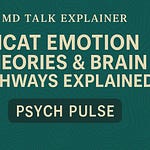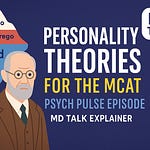🎧 MCAT Psych Pulse – Episode 10: Psychological Disorders Demystified
In this high-yield MCAT episode, we explore major psychological disorders through the lens of the DSM-5, focusing on biological foundations, classification criteria, and key treatment strategies. Learn about anxiety disorders, OCD, bipolar disorder, schizophrenia, and dissociative identity disorder with real-world examples and MCAT-relevant explanations.
✅ Topics covered:
DSM-5 diagnostic criteria
Neurotransmitter imbalances (dopamine, serotonin, norepinephrine)
Psychotherapy techniques: CBT, ERP, psychodynamic therapy
Pharmacological treatments: SSRIs, antipsychotics, mood stabilizers
The biomedical vs. biopsychosocial models
🎓 Presented by MD Talk Studios | Part of the MCAT Mastery Series by YourMD.online
📚 For more episodes and resources: MD talk.substack.com/s/mcat-psych-pulse
🧠 What You'll Learn in This Episode:
In this 21-minute deep-dive episode, we cover high-yield MCAT topics related to psychological disorders, with real-world context and test-focused clarity. This discussion between Jennie and Dr. Carter explores:
🔬 1. Biological Foundations of Psychological Disorders
Role of neurotransmitters: dopamine, serotonin, GABA
Brain structures and pathways linked to disorders
Genetic predisposition and environmental influences
📖 2. DSM-5 Classification System
Overview of diagnostic criteria
Categories of disorders:
Anxiety disorders
Obsessive-Compulsive and Related Disorders
Bipolar and Related Disorders
Schizophrenia Spectrum and Other Psychotic Disorders
Dissociative Disorders
💊 3. Treatment Modalities
Pharmacological approaches (SSRIs, antipsychotics, mood stabilizers)
Psychotherapy: CBT, exposure therapy, behavioral interventions
Biopsychosocial model of treatment
🧩 4. Real-World Case Scenarios
Patient examples for each disorder category
Common clinical presentations and red flags
Therapeutic decisions based on symptoms
📚 Included in This Post:
✅ Downloadable Study Guide (PDF)
✅ Infographics and Key Visuals – Neurotransmitters, DSM-5 map, therapy comparison table


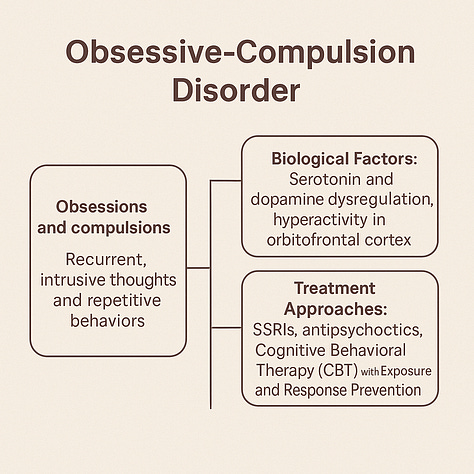
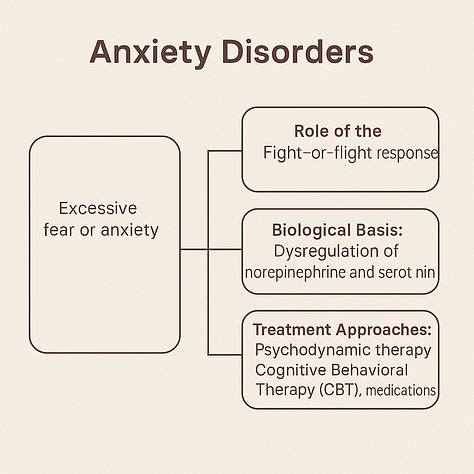



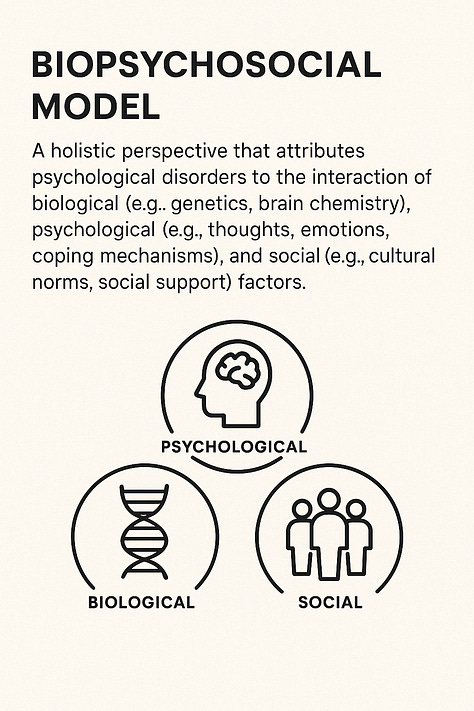

⚠️ Disclaimer: This educational content is intended for MCAT preparation and general knowledge. It is not a substitute for clinical training or medical advice. The views expressed are exclusive to YourMD.online and are not affiliated with AAMC or other organizations.
📩 Don’t miss future episodes. Subscribe now at mdtalk.substack.com
🧠 Stream more MCAT content and tools at MCAT Pulse Podcasts





